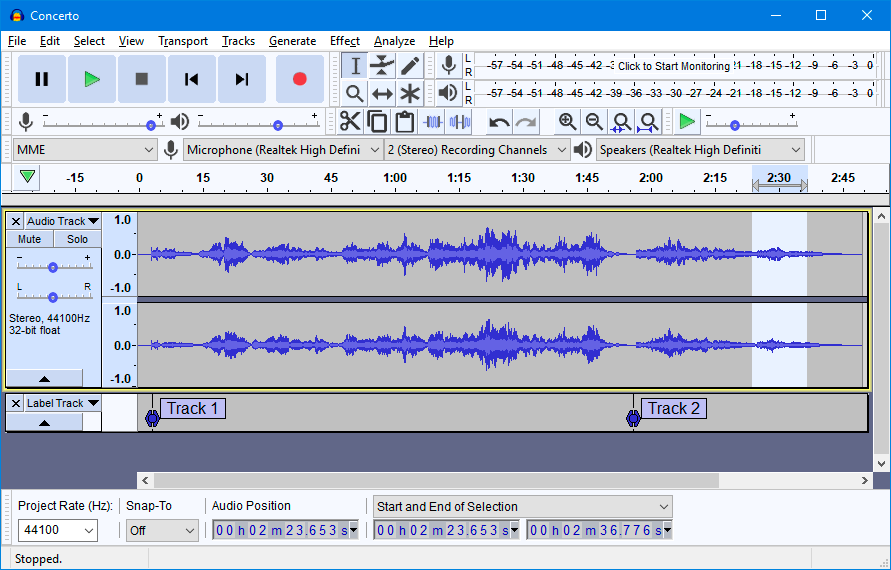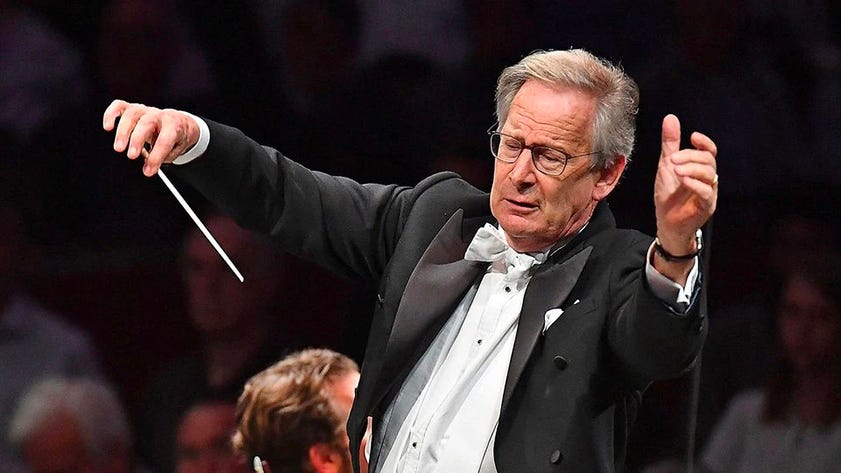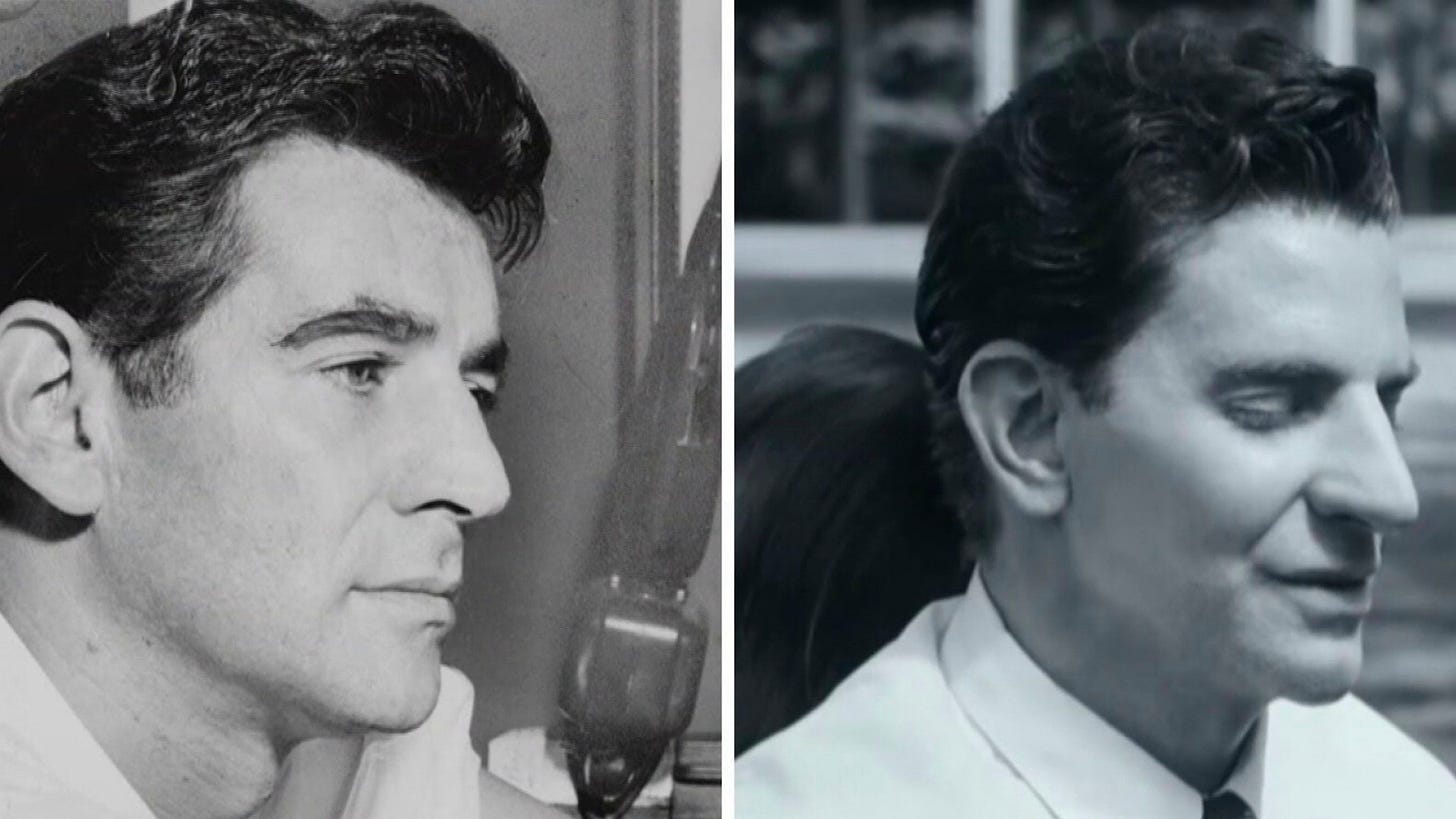The CGF Newsletter is now Tone Prose
It’s been exactly a year now since the last episode of the Classical Gabfest podcast and the inaugural edition of this newsletter, so we’re celebrating with a new name and logo!
Why the change? Well, when we started the newsletter, the idea was that it might be a stopgap until we could assemble a new podcast team. But after a year, the podcast has been fully put to rest in the hearts and minds of its creators and the newsletter lives on. It’s now its own distinct entity and it needed its own distinct identity.
Tone Prose is a play on “tone poem” and it seemed a clean encapsulation of what the newsletter is all about. The newsletter content remains the same—we’re even keeping Name That Tune! So you can continue to enjoy your weekly mix of news blurbs, concert reports, album & video reviews, personal essays, and music recommendations.
Name That Tune
This week’s Name That Tune is a Joey Special. Here’s your “hint:” though I can’t speak for Will (or broadly, for Listeners who submit to NTT: see below), I hear those who commented that our NTT’s have been too difficult, niche, or obscure. Starting from today’s offering, a Joey Special will be by a more famous, canonical, or otherwise more-guessable composer, as far as I can tell. And remember — guessing, analyzing, and being wrong is the fun part!
As always, your goal is to provide as much accurate analysis as possible. First try to get the nationality, year, and genre, then make educated guesses about the composer and — if possible— the piece. If you know the piece immediately, send us an email at toneprose@substack.com instead of commenting so the rest of us can have fun guessing.
Last Week’s Results
Tone Prose 52
Kaija Saariaho, Sept Papillons
Bravi to Listener Kevin and Listener Eric for correctly identifying this piece and its composer! Joey programmed this clip a couple months ago, but I still gave him crap for inserting such an outré selection right after we’d had comments asking for “Mozart” in the NTT space. It turns out this was the populist success story we’d all been waiting for!
My own guesses were pretty bad (Ligeti, Kodaly, Kancheli) but the identity of this track came as a welcome surprise; I’ve had trouble getting into Saariaho in the past, but I quite liked this clip.
And in a final note that we’ll never fully escape the CGF podcast past, I’ll mention that this piece was actually Kensho’s classical mixtape suggestions in our second Classical Spookfest special. If only I’d been paying closer attention, I could have gotten this myself!
Think you can stump your fellow Listeners? Go ahead and try!
Head to our Google Form to upload a 30-second clip of an unidentified piece of classical music for us to try to identify.
NTT Primer
The people have spoken and the NTT feature will remain a part of the newsletter. In the interest of garnering more submissions from you wonderful Listeners, here’s a little breakdown of how I (Joey) make a Name that Tune (it takes no more than 10 minutes!) There are undoubtedly other ways to make a clip of ~30 seconds of audio, but I find this to be the easiest.
Choose a piece! (Sometimes this is the hardest part.)
Search for a recording of the piece on YouTube, Spotify, or other streaming platform. (Some of you may even harbor (gasp!) audio files of music on your computer.)
When you have chosen the ~30 seconds of music that you want to use, open Audacity. (Audacity is a free, open-source, easy-to-use audio editor available for any operating system.) You need to be able to record your own computer’s internal audio directly, and that’s why we use this program.
In Audacity, under Audio Setup > Recording Device, choose the option that has “(loopback)” at the end of its name. (This means that it will record your computer’s audio. Here is a more detailed guide on how to do this on Audacity for Windows, or here for Mac. If you use Linux or something else, I assume you’re tech-savvy enough to do this yourself!)
Press the big red record button, your open YouTube/Spotify/music playing window, and play the ~30 second clip you intend to use. When done, end the recording on Audacity!
After the recording is done, go to File > Export > Export as WAV (though other file types should work just as well), to make your Audacity project into an audio file.
Once you’re done with your recording, you can upload it to our Google Form (always linked at the bottom of the NTT segment). I (Joey) will take it from there, and you can stump your fellow listeners!
The Slap Heard Around the World
There were two pieces of classical news that rose to the level of “the discourse” while I (Will) was away in Britain, and this is the first one. I’ll quote The Guardian from August 24:
Sir John Eliot Gardiner, 80, assaulted William Thomas, 29, an English bass who represented England in the Cardiff Singer of the World competition, after an opera performance on Tuesday, according to reports.
In a statement, Gardiner apologised unreservedly for his behaviour saying: “I make no excuses for my behaviour and have apologised personally to Will Thomas, for whom I have the greatest respect. I do so again, and to the other artists, for the distress that this has caused.
The conductor allegedly confronted Thomas after the show as the cast was celebrating in the wings. Gardiner is alleged to have approached the group while carrying a half pint of beer and said: “I feel like throwing this over your head,” the source said.
When Thomas warned him not to do so, witnesses said Gardiner slapped the singer in the face and then punched him in the mouth. There was a “brief shouting battle” before Thomas left with colleagues, the Times reported.
John Eliot Gardiner, known as JEG or “Jiggy” in the biz, went on to make some lame excuses about overheating and a change in medication that made him unusually irritable on that particular night. But that’s all hogwash. JEG has long been known as an abusive personality and every British musician has their stories about him.
I didn’t know about his reputation until 2018 when I was in London for a few weeks over the summer and got to chatting with an American musician friend who had emigrated there. She told me many stories including one from a close friend who had had a particularly egregious experience with Gardiner. I spent the next month or so working with an American journalist friend to track down someone in Britain who might be willing to publish her story. They finally made contact, but the victim decided not to go on the record; she feared it would be too damaging to her career.
So my question is: now that this exemplar of Gardiner’s long-term behavior is out, will the flood gates finally open?
The Nose
The second story that made noise over the past few weeks is the reaction to Bradley Cooper’s prosthetic nose in his upcoming film Maestro, in which he portrays the late, great Leonard Bernstein.
This was covered everywhere from Deadline to the New York Times to NPR to Vanity Fair. The issue is succinctly described in this Instagram reel from Dan Rosen: “he did a little Jewface.”
The make-up and costumes from this film have been the focus of quite a bit of attention since the very first stills were released over a year ago, and we covered the issue on the podcast. At that time, most of the clamor was over the incredible old age makeup that allowed Cooper (also the film’s producer) to look like Bernstein age 70. But even then, there was a bit of controversy over the appropriation of Bernstein’s supposedly Semitic profile.
In that episode, my co-hosts and I were of the opinion that this was pretty ridiculous, an opinion roundly espoused by Mark Harris in Slate: “I am not in sympathy with a view of acting that centers an actor’s identity rather than a character, or with the blanket disqualification of certain kinds of transformational artistry that is inherent in that approach, and I’m troubled when Jewishness is enlisted to support it.”
That article is well worth reading in its entirety, but I have to admit that my view on this subject has changed a bit since seeing Cooper as the young Bernstein. If the nose truly made Cooper look more like LB, I think I could get past it. But take a look at that comparison photo up above. Lenny’s nose didn’t look anything like that! So now I’m leaning towards the “problematic” categorization, or at the very least I’m willing to accuse the production of shoddy workmanship.
To me though, the much bigger problem—as evidenced from the trailer—is that the gist of the story seems to be “a troubled artist is brought to heel by the love of a great woman,” which is a hell of an interpretation of the biography of Leonard Bernstein.
Tone Praise
Robert Schumann, String Quartet No. 3
I came across this week’s Tone Praise selection [do you like how I rebranded the Mixtape for our new name? It was just sitting there... I couldn’t resist!] on the Spotify Classical New Releases playlist.
How often does one think of the Schumann string quartets? I know that I never do! But this is fantastic music and it’s spurred me to investigate them much more closely than I ever have.
This Leonkoro Quartet is a marvelous young group and their new album pairs the Schumann with the Ravel. Not too shabby!







I’m inclined to withhold judgement on The Nose for now. It does seem too big, but then again a prosthetic nose is generally going to be bigger than the original, since the (real) Cooper nose has to be reckoned with underneath the (fake) Bernstein nose. Possibly the world is expecting it to look perfect, like a deepfake, whereas Bradley Cooper was hoping to do it all with practical effects. To e fair, I think a lot of the comparison photos have been from slightly different angles, minimizing one and accentuating the other.
The thing is, though, the film isn’t finished and undoubtedly has a CG budget. So I would bet my life that when it comes out, the nose will be smaller than it is in the trailer.
NTT: There are Haydn/Mozart vibes but something's not quite right. Texture seemed fuller than I would expect from their writing, and the direction of the music felt decidely non-classical. I could believe the guess of early Romantic.
Saariaho: I enjoyed listening to the suggested Le Passion de Simone. Tried listening to several other works and was less convinced.
While I certainly adored the podcast, I have been enjoying the newsletter. It's original, has nice character, and has been a pleasant visitor to my inbox. Happy it's continuing.